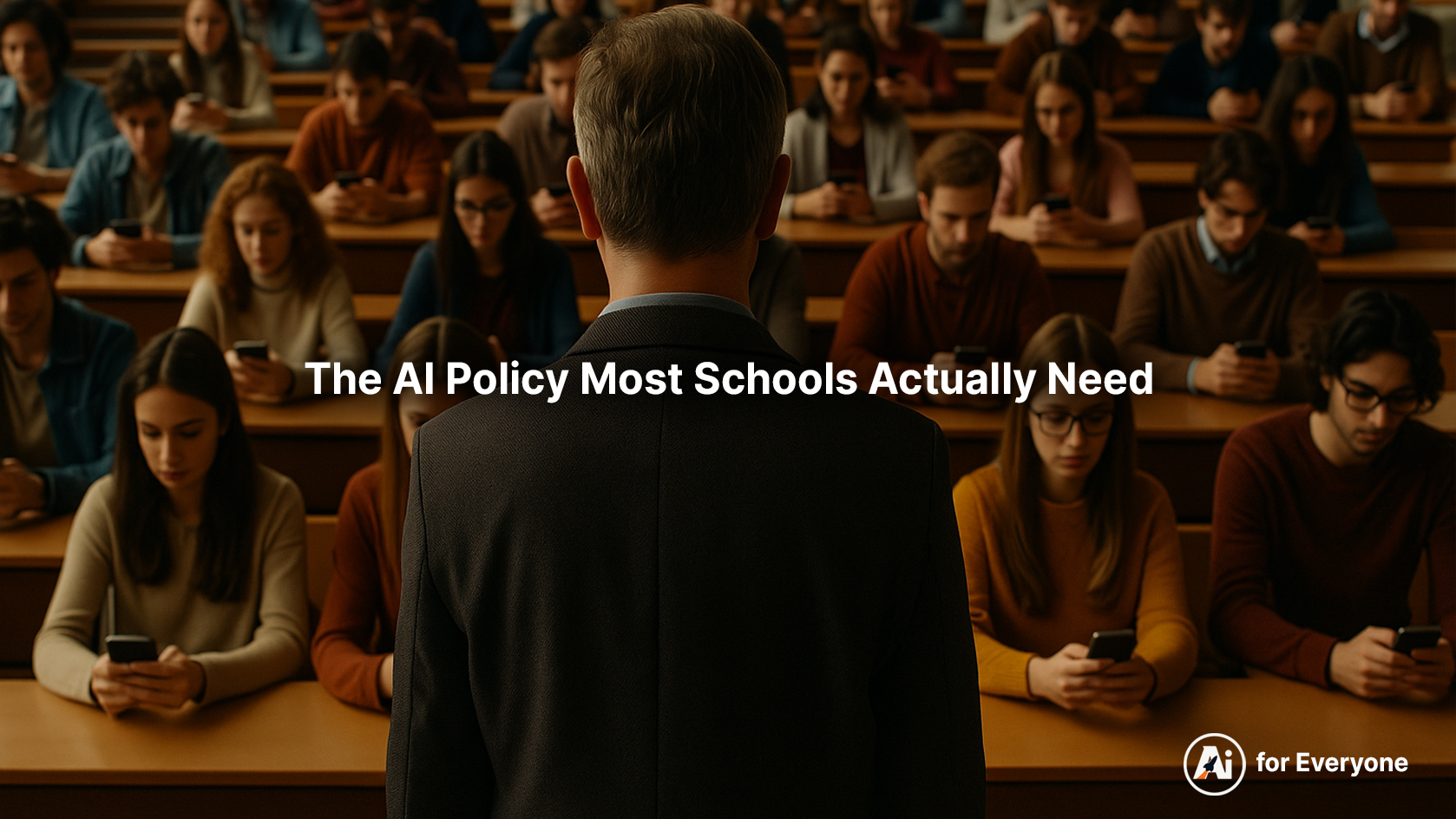AI is already in your classrooms, your meetings, and your inboxes. But for many school systems and universities, the rules around it are still unclear. Educators want to do the right thing. They want to innovate. But without guidance, most are stuck wondering what’s allowed, what’s risky, and what happens if they guess wrong. The result? Silence, hesitation, and missed opportunities.
What Happened
As AI tools like ChatGPT, Claude, and Gemini enter the classroom, campus, and admin offices, districts and universities are racing to catch up. Policy committees form. Legal teams weigh in. But on the ground, faculty and staff are still asking:
Can I use AI in my curriculum?
Can I put student info into a chatbot?
What happens if I get it wrong?
Without a clear, practical policy, most educators either avoid AI entirely or use it with quiet uncertainty.
Why It Matters
This is bigger than compliance. It’s about trust.
Educators are not waiting for permission. They’re experimenting in real time, trying to serve students better — while navigating ambiguity. When policies are vague, innovation slows. Or worse, it goes underground.
Strong AI policy is not a document. It’s a leadership signal. It says, “We’re paying attention. We support thoughtful experimentation. And we’ll protect our people while doing it.”
If your teachers don’t know the rules, they’ll make up their own. That’s not empowerment. That’s risk.
How It Impacts You
Whether you’re a district leader or university CIO, your staff does not need a 40-page policy PDF. They need a working agreement they can actually use.
That means clear use cases, simple guardrails, and a person they can ask when something feels uncertain. Clarity builds confidence. Confidence builds momentum.
In education, ambiguity slows everything down. But clarity? Clarity moves people forward.
3 Things You Can Do Now
- Create a one-page AI policy your staff will actually use
Focus on use cases, not hypotheticals. List allowed tools, sensitive data restrictions, and a contact person. - Assign an AI policy lead
Designate someone who can gather questions, escalate issues, and evolve the policy as use grows. It’s not about control. It’s about connection. - Audit where AI is already in use
From grant writing to curriculum planning, AI is likely being used unofficially. Start there. Build policy around reality, not assumptions.
One More Thing
Most policies are designed to prevent mistakes. The best ones are built to enable action.
What would change if your educators didn’t have to guess?
~Harrison
